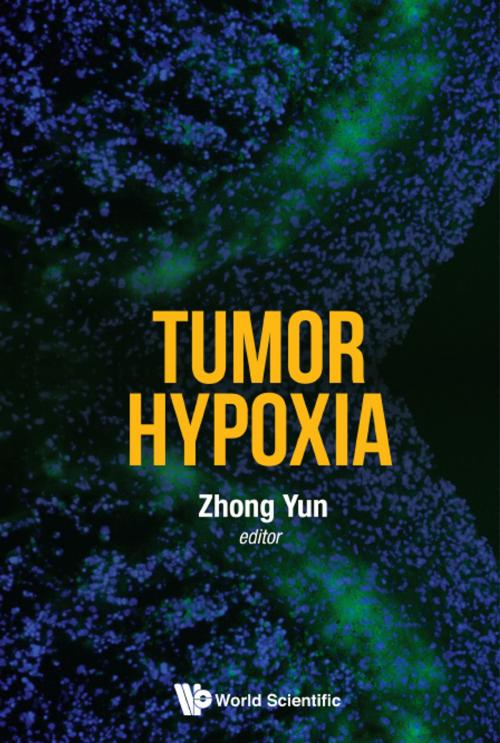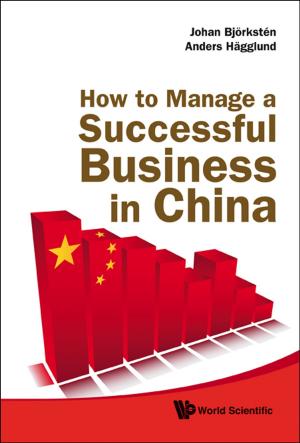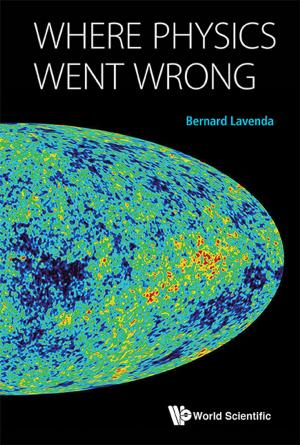Tumor Hypoxia
Nonfiction, Health & Well Being, Medical, Specialties, Oncology, Science & Nature, Science, Biological Sciences, Biology| Author: | Yun Zhong | ISBN: | 9789813147331 |
| Publisher: | World Scientific Publishing Company | Publication: | December 22, 2016 |
| Imprint: | WSPC | Language: | English |
| Author: | Yun Zhong |
| ISBN: | 9789813147331 |
| Publisher: | World Scientific Publishing Company |
| Publication: | December 22, 2016 |
| Imprint: | WSPC |
| Language: | English |
Tumors often start out as a benign growth, but gradually progress toward the malignant stage over a relatively long period of time. Tumor progression results from accumulated genetic mutations and inheritable epigenetic modifications that enable clonal evolution and selection of new clonal populations of tumor cells with aggressive characteristics including metastasis and therapy resistance. Increasing amounts of experimental evidence suggests that tumor microenvironment play a significant role in directing clonal evolution and determining clonal cell fate, which eventually leads to emergence of malignant tumor cell clones. Hypoxia is the most commonly observed feature of tumor microenvironment. Tumor hypoxia is significantly associated with malignant progression and predicts poor patient outcomes. This book provides detailed and up-to-date treaties on the role of hypoxia as a major driving force in tumor microenvironment to elicit cellular adaptation and clonal selection via genetic mutations and epigenetic modifications, to facilitate cancer stem cell maintenance, to enhance metastasis, to augment therapy resistance, and to evade immune surveillance.
Contents:
- Preface
- Tumor Hypoxia and Radiotherapy (Olivia J Kelada and David J Carlson)
- Post-translational Modifications of the Hypoxia Inducible Factors (Ian Cartwright and Chuan-Yuan Li)
- Hypoxia and Metastasis (Elizabeth C Finger and Amato J Giaccia)
- Hypoxia and Cancer Stem Cell Regulation (Sofie Mohlin, Annika Jögi and Sven Påhlman)
- Hypoxia and Senescence (Yashi Gupta and Scott M Welford)
- Hypoxic Reprogramming of Tumor Metabolism, Matching Environmental Supply with Biosynthetic Demand (Betina McNeil, Ioanna Papandreou and Nicholas C Denko)
- Regulation of DNA Repair by Hypoxia (Yuhong Lu and Peter M Glazer)
- Regulation of the Hypoxic Response by Non-coding RNAs (Xin Huang)
- Hypoxia-Induced Endoplasmic Reticulum Stress (Chih-Chien Chou, Rakesh Bam, Zhifen Yang, Justin L Bui, Dadi Jiang and Albert C Koong)
- The Hypoxic Tumor Microenvironment and the Anti-cancer Immune Response (Joseph Barbi and Fan Pan)
Readership: Medical professionals, graduate students and researchers in tumor biology, cancer biology and oncology.Key Features:
- Emerging areas of research: cancer stem cells, epigenetics, immune modulations, post-translational modifications of HIF, cancer metabolism
- Comprehensive discussion of clinical impact as well as new mechanistic paradigms
- Internationally renowned leaders in the field of hypoxia, tumor microenvironment, and cancer biology: Giaccia, Glazer, Pahlman, and Li
Tumors often start out as a benign growth, but gradually progress toward the malignant stage over a relatively long period of time. Tumor progression results from accumulated genetic mutations and inheritable epigenetic modifications that enable clonal evolution and selection of new clonal populations of tumor cells with aggressive characteristics including metastasis and therapy resistance. Increasing amounts of experimental evidence suggests that tumor microenvironment play a significant role in directing clonal evolution and determining clonal cell fate, which eventually leads to emergence of malignant tumor cell clones. Hypoxia is the most commonly observed feature of tumor microenvironment. Tumor hypoxia is significantly associated with malignant progression and predicts poor patient outcomes. This book provides detailed and up-to-date treaties on the role of hypoxia as a major driving force in tumor microenvironment to elicit cellular adaptation and clonal selection via genetic mutations and epigenetic modifications, to facilitate cancer stem cell maintenance, to enhance metastasis, to augment therapy resistance, and to evade immune surveillance.
Contents:
- Preface
- Tumor Hypoxia and Radiotherapy (Olivia J Kelada and David J Carlson)
- Post-translational Modifications of the Hypoxia Inducible Factors (Ian Cartwright and Chuan-Yuan Li)
- Hypoxia and Metastasis (Elizabeth C Finger and Amato J Giaccia)
- Hypoxia and Cancer Stem Cell Regulation (Sofie Mohlin, Annika Jögi and Sven Påhlman)
- Hypoxia and Senescence (Yashi Gupta and Scott M Welford)
- Hypoxic Reprogramming of Tumor Metabolism, Matching Environmental Supply with Biosynthetic Demand (Betina McNeil, Ioanna Papandreou and Nicholas C Denko)
- Regulation of DNA Repair by Hypoxia (Yuhong Lu and Peter M Glazer)
- Regulation of the Hypoxic Response by Non-coding RNAs (Xin Huang)
- Hypoxia-Induced Endoplasmic Reticulum Stress (Chih-Chien Chou, Rakesh Bam, Zhifen Yang, Justin L Bui, Dadi Jiang and Albert C Koong)
- The Hypoxic Tumor Microenvironment and the Anti-cancer Immune Response (Joseph Barbi and Fan Pan)
Readership: Medical professionals, graduate students and researchers in tumor biology, cancer biology and oncology.Key Features:
- Emerging areas of research: cancer stem cells, epigenetics, immune modulations, post-translational modifications of HIF, cancer metabolism
- Comprehensive discussion of clinical impact as well as new mechanistic paradigms
- Internationally renowned leaders in the field of hypoxia, tumor microenvironment, and cancer biology: Giaccia, Glazer, Pahlman, and Li















